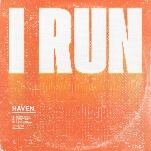The signature neon-and-smoke Blade Runner aesthetic is all over video games, from Hideo Kojima’s 1988 Snatcher to more recent efforts like the Deus Ex series, Gemini Rue, and futuristic bartending sim VA-11 HALL-A. In games, Blade Runner and cyberpunk are synonymous.
Over at Kotaku, Peter Tieryas talks with the folks behind the only two games directly adapted from Ridley Scott’s 1982 classic. In 1985, an 8-bit Blade Runner game came out for the Commodore 64 and ZX Spectrum, but publisher CRL Group PLC was actually unable to secure the rights to the film; as a workaround, it’s technically based on Vangelis’ soundtrack.
The more popular, and better, adaptation is Westwood Studios’ 1997 Blade Runner, a point-and-click PC game that pulls some interesting Silent Hill 2-style tricks with player perception and choice.
“Above all the Blade Runner game is a simulation,” [executive producer Louis] Castle explained. “Each character collects information and shares it while events continue to unfold. The player is inside the simulated machine and sets conditions which allow for events, but the exact order is very loose. Interestingly, the game does not determine McCoy’s reality. Characters like Lucy may be replicant or sympathizer but no such decision is made for McCoy. If the player plays as if McCoy is a replicant, then the simulation notices and treats McCoy as a replicant. The converse is equally true. This further enhances the player’s ability to inform the narrative and to make the world of Blade Runner very personal. It is even quite possible to play the game to the completion and in the final moments have a dramatic change in behavior that flips the world’s assessment of your humanity, or lack thereof.”
Blade Runner ’97 still looks impressive, too, thanks to the fixed camera angles, atmospheric lighting and smoke effects, and voxel-based rendering—a technique still unusual today. With Blade Runner 2049 on the horizon, which we’re excited about, it’s worth playing a bit of these games to get yourself in that replicant-huntin’ headspace.
[Note: Kotaku, like The A.V. Club, is owned by Univision Communications.]








































